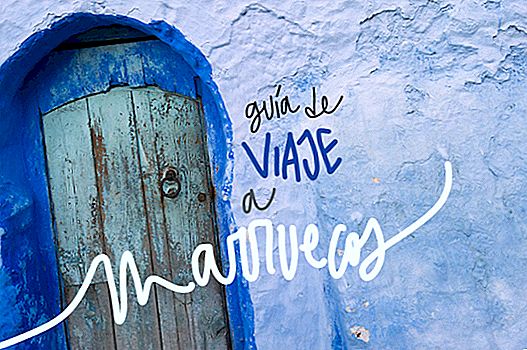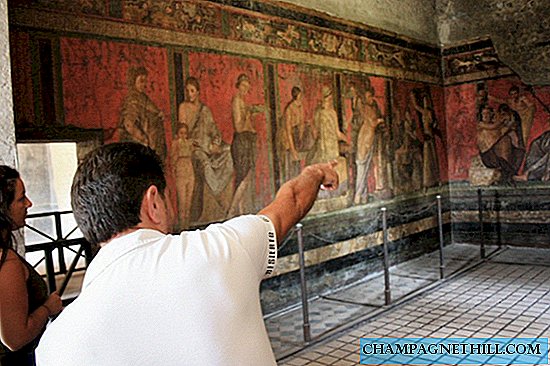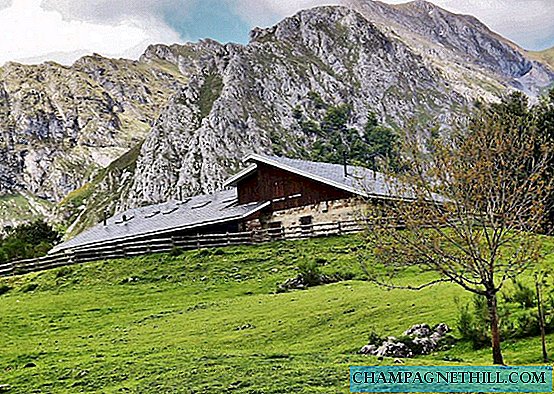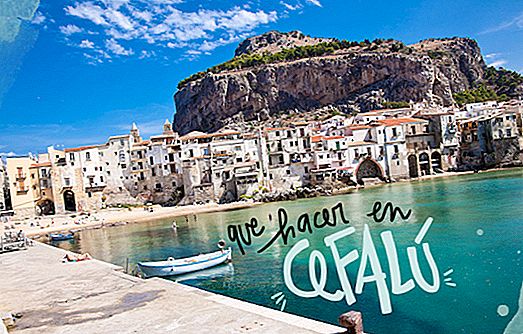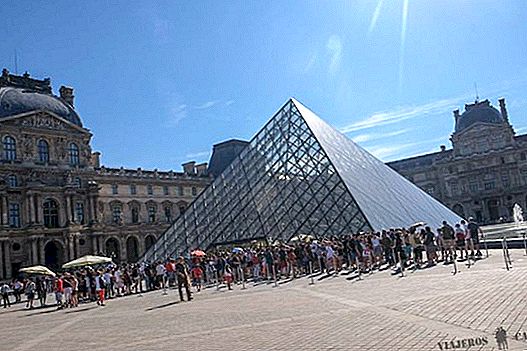Day 7: Train from the Clouds to Tibet - Lhasa
There are a few minutes to 7 in the morning when we wake up and after a few seconds, we remember where we are, assimilating that we are in our compartment on the train from Shanghai to Lhasa, known as the Train from the Clouds to Tibet, at which time it is time to take advantage of going to the bathroom, at this time of the morning there is still not much transfer and start preparing our breakfast, with the instant coffee we bring from home and the cookie packages that we buy in Shanghai.
In this area of Tibet it dawns a little later, about 8 in the morning, so it is still practically closed night, something that does not allow us to see the landscape in detail, but that allows us to intuit the change that little by little becomes more remarkable and that begins to leave us a much more arid landscape than we had seen so far and especially with much less buildings.
After going through the bathroom, picking up the bunk beds and having breakfast, we began to notice some dizziness, a symptom of altitude sickness and we cannot forget that at 4 in the morning we have passed through Golmund, already at almost 3000 meters and now we begin to approach the Kunlun mountain pass, where we will pass from 2800 meters to 4700 meters.
2nd day route on the Train of the Clouds to Tibet

Our compartment in the Train of the Clouds to Tibet

Views from our compartment on the Train of the Clouds to Tibet
As we said yesterday, in the advice for altitude sickness to Tibet, when we pass, even gradually, at a height above 2500 meters, you have to take things easy, without making sudden movements and over All, drink plenty of water to be as hydrated as possible.
As the minutes go by, that dizziness begins to disappear, and we begin to enjoy, much quieter, the landscapes that this incredible trip to Tibet is giving us in 19 days, although at the same time we begin to listen and see how the Symptoms of altitude sickness begin to wreak havoc on the passage, seeing how several wagon companions need oxygen or go in search of the bathroom due to vomiting.
This is how 9 o'clock gives us the time we take to make a second breakfast and that is Train from the Clouds to Tibet, having so many free hours, in addition to the incredible landscapes, hunger seems to also appear more frequently, so it is time to make another coffee and reach some snacks with which to accompany a reading time, accompanied by increasingly impressive landscapes.

Landscapes on the Cloud Train to Tibet

Coffee on the Train of the Clouds to Tibet
Since one of the tips to avoid the symptoms of altitude sickness is to drink a lot of water and although we had bought at the Shanghai station, we have run out, so after repeatedly asking the train staff that passes through the different Wagons selling drinks, meals and snacks and that they tell us they do not have, we decided to approach the restaurant car, where after showing them an empty water bottle, to avoid misunderstandings, they tell us again that they do not have and that they close at that moment.
Given this, and although we have soft drinks, we decided to ask one of the girls who pass through the car, and whenever we cross it she has a big smile for us, which immediately tells us to follow her again to the restaurant car, where after speaking in a somewhat high tone with several waiters, they end up selling us several bottles of water.
Given this, we can not recommend that in addition to buying water at the Shanghai station, just in case, if they tell you that they do not have on the train, insist, since they do, although we do not understand the reason for which they did not want to sell us.

Train car of the Cloud Train to Tibet
After spending a good time in the morning resting and enjoying the scenery, we take a short walk down the train aisle, slowly so as not to force the body, at which time the first yaks appeared in the snow. We didn't have the camera or the phone, so we had to close our eyes to record that image on the retina.
After the experience we have to say that without a doubt, the trip in the Train from the Clouds to Tibet It is totally recommended. If you have these two extra days, do not forget to do it since it is a unique experience from the beginning to the end.

Tibet landscapes. Train of the Clouds

Train from the Clouds to Tibet

Train from the Clouds to Tibet
As you can imagine, the hours fly by and the landscapes are extremely impressive, some words that we believe will accompany us for the rest of this trip to Tibet.
As we gain height the skies are increasingly clear and leave us that image that we had not long ago in San Pedro de Atacama on the trip to Chile and Easter Island, which we like so much and that make us feel in that same instant, besides being small in front of nature, extremely privileged to live as we had always dreamed.

Train from the Clouds to Tibet

Train from the Clouds to Tibet

Train from the Clouds to Tibet
We arrive after eating at Nagqu, in the north of the autonomous region of Tibet, at which time we are at 4450 meters and last stop before finally arriving, until our long-awaited Lhasa.
From this moment, the unique images of rivers, frozen lakes and mountains of perennial snows dotted with yaks, become a constant in the landscape, at the same time that every few minutes people get "auction"the bathroom to be able to vomit, something that leaves evidence again, that altitude sickness is nothing to joke about.
It is clear that only for these views deserves to make this trip by train, in addition to the experience itself, which involves being 48 hours on a train, practically without any tourist.

Train from the Clouds to Tibet
It's 19:30 when we arrive in Lhasa, after 48 hours since we left Shanghai, at which time we have to hang our backpacks, trying not to make any extra effort, let's not forget that we are 3650 meters above sea level and leave the Train of the Clouds, a journey that has allowed us practically touch the clouds with your hands and tour one of the most wonderful lands in the world.

Lhasa Station
After taking the first steps with the backpacks, much heavier than before and harder to load at this altitude, we will pass the passport and permit control directly, which is at the door of the station and check as what we had read It is totally true: that Lhasa that we were looking for will have to wait, since right now the reception is made by a large cement building, which seems a lie, to find in this place.
We arrive at the exit of the station, where the passport control is and directly, when we see Westerners, they make us wait, until they come to find us a couple of policemen that take us to a building that is right next door, where After showing our passports and permits, they let us pass without problems.
Seeing what we saw, we understand that there is the only place they have to be able to scan passports, so if they take you from the queue and take you to another building, don't worry, it's the normal procedure.

Lhasa station. Tibet
We left the station with our backpacks and 3650 meters behind us, finding ourselves we could say that perfectly, where we just left Pasang, which will be ours guide in Spanish in Tibet with a sign with our name and The China Guide, who will accompany us on this trip, as we explained in the preparations to travel to Tibet and we cannot forget that you can't travel to Tibet for free, since you always have to do it through an agency.
As soon as we pick up and make the presentations we start a conversation, it seems that we have known each other for a lifetime, we go to the parking lot where a 4 × 4 awaits us, which will be our car the next days on the road in Tibet, which we have to say I love it and more knowing the hours that we will have to spend in it, with "Tre" at the head, which will also be our driver these days.
Pasang and Tre are Tibetans and although the latter does not speak any English or Spanish, we are totally convinced that we will understand each other perfectly. We only need a few minutes, see his face and his smile to know. Something that has also happened to us with Pasang, with whom besides the smile we share the language, something that in a place like Tibet, was essential for us
It took us about 20 minutes to get to the Barkhor area, going through a bridge from where we first saw the Potala in the distance and where we can't stop looking, no matter how much we lose sight of it. We are finally in Tibet, after so much time dreaming it.
Cars cannot pass in Barkhor, so Pasang called Tashitakge Hotel Lhasa yesterday, where we will stay for the next 6 nights, to meet someone who came to look for us to guide us to the hotel.
And on time there we found a boy from the staff who after saying goodbye to Pasang and Tre, hangs a backpack on his shoulder and takes us for the first time through the streets of the traditional Lhasa that we had always dreamed of and that we are seeing right now Quick camera, but they leave us a taste in the mouth, we know, we will not forget.
We arrived at the hotel and after presenting all the documentation, including passports and permits, checking in and being amazed at the reception, we went up to the third floor, there is no elevator but they help us climb the backpacks, we find a perfect room, Traditionally decorated, we have to say, we fall in love.
The initial idea was to go out to dinner, but knowing that it is not advisable to eat a lot in these first hours adapting to the height and being almost 9 at night, we decided to make a coffee and go up to the terrace of the hotel from where we have one of the most wonderful views in the world and one of the reasons we chose this hotel to stay in Lhasa: the amazing Potala.
Remember that any foreign traveler who wants to travel to Tibet must do so through an agency (IT IS IMPOSSIBLE TO TRAVEL TO TIBET FOR FREE), either by adding to a group or privately and having, before entering Tibet, a fixed route, that the agency will have submitted and must be approved by the Chinese authorities.
To obtain the visa and all permits, it is necessary that this itinerary be approved by the authorities. It is also not possible to modify the itinerary on the fly, something very important to keep in mind, as it will force you to be clear about what you want to visit from the first moment, since based on that, the agency will manage the permits.
In our case we have traveled with The China Guide, who managed all the permits after designing a personalized itinerary together, with a guide in Spanish and that has led us to enjoy as we had never imagined this magical place.
"A train. 48 hours. Shared compartment with 3 more people with whom you sleep, eat, read, look out the window and even end up speaking Chinese without understanding you. A litter they call soft, but that is like a stone. A shared bathroom-hole with 40 more people. Share food with anyone. Eat instant soups for two days. Drink instant coffee as if there was no tomorrow ...
And for all that, feel immensely happy. For being able to do and enjoy what you really like. For feeling incredibly LIVE. For feeling that in a backpack you carry everything you need and things are still left over. To confirm again that moving is part of you. To continue seeing, day by day, that people are much more similar than we think, even if they separate us thousands of kilometers. For searching for a 3G signal while traveling by train, crossing the Tibetan plain, just for sending a message to your parents to tell them that you are "touching the sky".
For that and for crying, for crying when the sun slipped through the window of the train and hit me in the face for the first time while crossing Tibet. For crying again when I arrived in Lhasa and for the first time I saw the Potala in front of me.
For those moments that show you more than ever that life must be lived, kept in the retina and squeezed to the fullest. "
 Day 8: What to see in Lhasa: Kora de Barkhor, Jokhang Temple, Muslim Quarter, Potala Palace
Day 8: What to see in Lhasa: Kora de Barkhor, Jokhang Temple, Muslim Quarter, Potala Palace
 Remember that any foreign traveler who wants to travel to Tibet must do so through an agency (IT IS IMPOSSIBLE TO TRAVEL TO TIBET FOR FREE), either by adding to a group or privately and having, before entering Tibet, a fixed route, that the agency will have submitted and must be approved by the Chinese authorities.
Remember that any foreign traveler who wants to travel to Tibet must do so through an agency (IT IS IMPOSSIBLE TO TRAVEL TO TIBET FOR FREE), either by adding to a group or privately and having, before entering Tibet, a fixed route, that the agency will have submitted and must be approved by the Chinese authorities.


